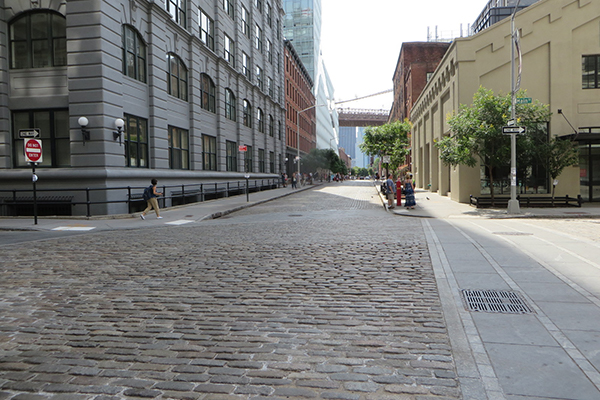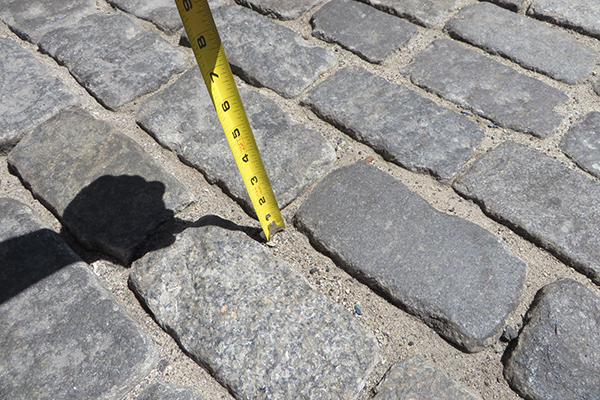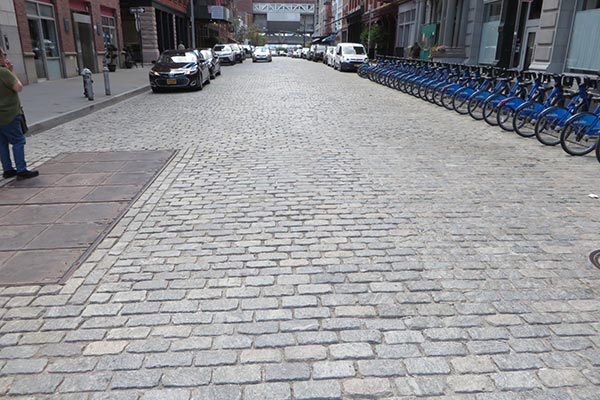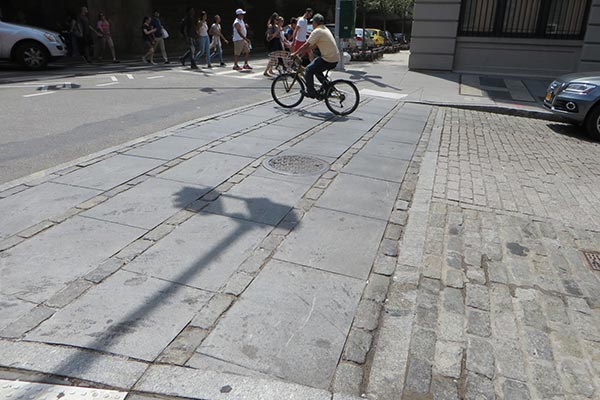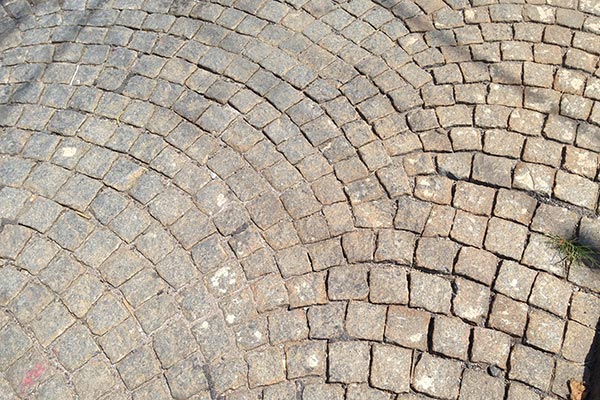Toward Accessible Historic Streetscapes
New York City
Client: Historic Districts Council
Award: 2018 ASLA-NY Design Award
Denisha Williams, RLA, LEED AP, ISA, and Jeff Byles, AICP, 2017
Download the Report: Toward Accessible Historic Streetscapes
In 2016, Being Here was commissioned by New York’s Historic Districts Council to examine an under-appreciated urban asset: historic pavement. Asphalt could be anywhere, but whether it’s brick, granite, cobblestone, or wood block, an old pavement’s texture and scale, the stories it tells about who and where we are—all contribute powerfully to a city’s sense of place.
Over six months we studied historic pavement in New York and talked with experts around the country. We discovered that cities across the United States are facing competing demands upon historic streets. Neighborhoods once full of factories and warehouses are now centers of loft living and creative industry. Today they must accommodate not horse-drawn carts or railcars but a new influx of local residents and modes of transportation necessary to create a walkable, bikeable, sustainable city of the 21st century. In particular, ADA accessibility standards are often perceived by city agencies and others as incompatible with historic streetscape materials, leading to an extensive loss of irreplaceable historic fabric.
Following the project's research phase, we prepared a study that explores how to best balance these competing priorities of preservation and accessibility. Our report focuses on one historic New York City neighborhood, DUMBO, where recent capital improvement projects and routine utility work have significantly impacted century-old Belgian block streets. The study offers a brief history of New York’s Belgian block; details the specific streetscape context of DUMBO; discusses applicable ADA accessibility standards; provides best practices from within New York City and beyond; and offers recommendations to better steward historic streets and advance preservation-minded placemaking.
Making streets from centuries past meet modern-day accessibility standards is not easy. But, we conclude, accessibility and preservation need not be mutually exclusive. Designing streets that are accessible for all is an opportunity to ensure that historic neighborhoods and their place-defining pavements are given the resources they need to endure and inspire for generations to come.

